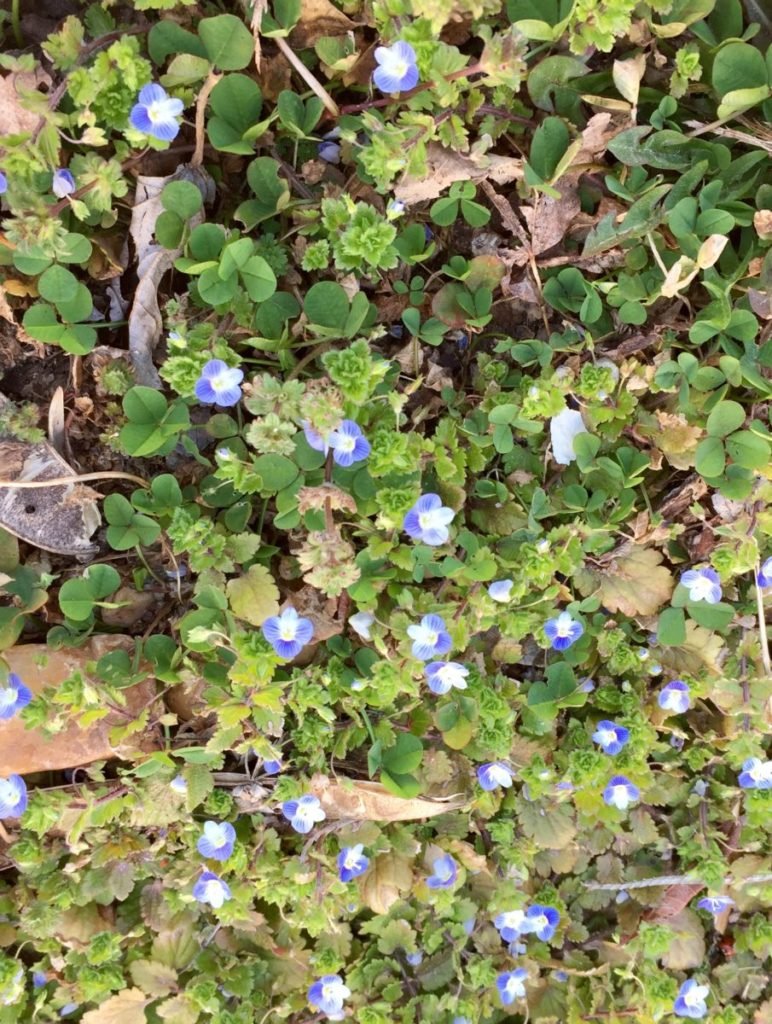
I’m not squeamish about getting my hands dirty, knees soiled, but I never thought I’d be writing about garden club ladies.
The county Garden Club (founded 1935) recently donated their records to the local Historical Society of which I am a member. By happenstance, I began reading the Minutes book for 1937-1939 and was immediately taken by the many and varied activities of the group. Beside the flower growing and arranging and public space beautification that you would expect, the club took on many civic causes such as supporting rural dental and immunization clinics, sponsoring an annual community celebration, and promoting nutritious school lunches. They donated money to the Red Cross, The Children’s Home Society (an adoption program), and the Cancer and Tuberculosis Societies as well as the Polio Fund, (The March of Dimes). I decided to write an article on these activities for our Historical Society Newsletter.
Among these civic activities there was also a push for an educational camp emphasizing conservation. As a youngster, I attended Nature Camp (Vesuvius, Va.) that was sponsored by the Virginia Federation of Garden Clubs. The woman who was Director and every camper’s ‘grandmother,’ appears repeatedly in these and subsequent Minutes. The camp, as the name clearly states, had classes on nature studies and on the conservation of natural resources. Thus, my first exposure to the idea of garden clubs was as a typically clueless kid of ten. Recently, I wrote another article for the Society’s newsletter on this strong-willed woman’s concept and realization of this very unique educational venue.
Sifting through the minutia of the various records, I was flabbergasted by the breadth of activities of the club, so I wrote another article. I began to remember that while in college I participated in an archaeological excavation at Patrick Henry’s home, Scotchtown. While seemingly not germane, the connection is that it was another exposure to the Virginia Federation of Garden Clubs who sponsored the exploration. We were looking for the ephemeral ‘formal’ gardens. Coincidentally, miles to the west, Hurricane Camille was ravaging Nelson County, Va., where I now live.
Another surprising aspect of the Garden Club was its involvement with ‘war work’ during WWII as many civic minded organizations were. They arranged blood drives, collected salvage materials, sewed garments for recuperating/convalescing veterans and even held fewer meetings to save gasoline. I wrote another newsletter article.
The archives have fifty-eight Personal War Service Records collected by one member of the Garden Club, which supplied information to the government, but were also used in compiling a publication, The Gold Star Honor Roll of Virginians in the Second World War. This county list of war dead was used for a memorial plaque, funded by the community under the auspices of the Garden Club. It was mounted at the county courthouse entrance in 1949. Greatly moved, I wrote another article.
By now, readers of the newsletter, both within the Historical Society and the Garden Club, encouraged me to keep going. The most recent realization is the fact that on several occasions the good ladies held their monthly meeting in the very house where I now reside and write. I can see the Nature Camp Director sitting on our couch.
I can’t say that my childhood was oblivious to flowers and gardening as my grandfather and father always had gardens and I think my mother even belonged to a garden club, but my interests were simply elsewhere. I remember my parents, on a Saturday, would go on ‘flower walks’ mostly along country roads, logging tracks or pedestrian trails. My father, a numbers man, would guess how many flowers they would identify and then keep a list of each species they’d see. The list would always tally in the dozens. In spite of this pedigree, I do not have their facility with flower names, though I admit a certain delight when I see the first-of-the-season, tiny Persian speedwell smiling from the ragged grass.
I have taken the challenge of writing a longer work on the Garden Club to heart, the minutia like weeds, like loam between my toes. Many questions itching like sticker seeds.

Share this post with your friends.


I love this. While working in the Baptist Church archives, compiling a 130 year history, I found, tucked way back in a cabinet, the records of Allied Arts, a group of ladies who met for 50 years, not as a church group, but an auxiliary club. I wrote a novel about these ladies, now all long gone.